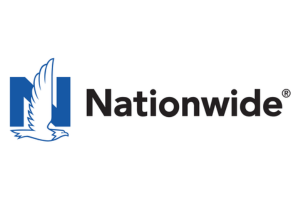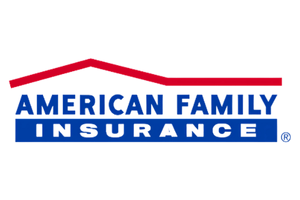Does Country Financial homeowners insurance cover tree damage?
Are you wondering if Country Financial homeowners insurance provides coverage for tree damage? This article explores the topic, providing valuable insights and answering your burning questions. Discover what you need to know about protecting your property from tree-related incidents.
Read more Secured with SHA-256 Encryption





Save Money by Comparing Insurance Quotes
Compare Free Home Insurance Quotes Instantly




Table of Contents
Table of Contents


Insurance Content Managing Editor
Daniel S. Young began his professional career as chief editor of The Chanticleer, a Jacksonville State University newspaper. He also contributed to The Anniston Star, a local newspaper in Alabama. Daniel holds a BA in Communication and is pursuing an MA in Journalism & Media Studies at the University of Alabama. With a strong desire to help others protect their investments, Daniel has writt...
Daniel S. Young


Licensed Insurance Producer
Dani Best has been a licensed insurance producer for nearly 10 years. Dani began her insurance career in a sales role with State Farm in 2014. During her time in sales, she graduated with her Bachelors in Psychology from Capella University and is currently earning her Masters in Marriage and Family Therapy. Since 2014, Dani has held and maintains licenses in Life, Disability, Property, and Casualt...
Dani Best
Updated January 2025
In this article, we will explore whether Country Financial homeowners insurance covers tree damage. Understanding homeowners insurance is crucial to comprehending how tree damage coverage fits into the overall policy. We will delve into the key components of homeowners insurance and then proceed to examine Country Financial homeowners insurance in detail. Finally, we will discuss the coverage for tree damage, Country Financial’s policy on tree damage, and the process of filing a tree damage claim with Country Financial.
Understanding Homeowners Insurance
Before we dive into the specific coverage for tree damage, let’s first familiarize ourselves with homeowners insurance. Homeowners insurance is a type of property insurance that provides financial protection to homeowners in the event of damage or loss to their property. It typically covers the dwelling, personal belongings, and liability arising from accidents on the property.
Homeowners insurance is an essential safeguard for homeowners, offering peace of mind and financial security. Imagine the devastating consequences of a fire engulfing your home or a burglar stealing your valuable possessions. Without homeowners insurance, the burden of replacing or repairing your property would fall entirely on your shoulders, potentially leading to significant financial strain.
However, with homeowners insurance, you can rest assured knowing that you have a safety net in place. By paying a premium, you enter into a contractual agreement with the insurance company, which agrees to provide compensation for covered losses. This compensation can help you rebuild your home, replace your belongings, and cover legal expenses if someone gets injured on your property.
What is Homeowners Insurance?
Homeowners insurance is not just a legal requirement but a wise investment for any homeowner. It acts as a shield against unforeseen circumstances that could otherwise have a devastating impact on your finances and overall well-being.
When you purchase homeowners insurance, you essentially transfer the risk of potential losses to the insurance company. In exchange, you pay a premium, which can vary depending on factors such as the location, size, and age of your home, as well as your claims history and credit score.
With a homeowners insurance policy in place, you gain protection against a wide range of risks. Fire, a common and destructive hazard, can cause extensive damage to your home and belongings. However, with homeowners insurance, you can receive compensation to rebuild or repair your property and replace any damaged or destroyed items.
Other risks covered by homeowners insurance include theft, vandalism, and natural disasters such as hurricanes, tornadoes, and earthquakes. These events can wreak havoc on your home, leaving you with significant financial burdens. Fortunately, homeowners insurance can help alleviate these burdens by providing the necessary funds to recover and rebuild.
Key Components of Homeowners Insurance
A homeowners insurance policy typically consists of various components, each playing a crucial role in protecting your home and finances.
Dwelling coverage is one of the fundamental components of homeowners insurance. It safeguards the physical structure of your home, including the walls, roof, floors, and foundation. In the event of covered damage, such as a fire or storm, dwelling coverage ensures that you have the necessary funds to repair or rebuild your home.
Personal property coverage is another vital aspect of homeowners insurance. It provides financial protection for your belongings, such as furniture, appliances, electronics, and clothing. If your personal property is stolen or damaged due to a covered event, personal property coverage can help you replace these items and restore your everyday life.
Liability coverage is critical in protecting you from potential lawsuits and legal expenses. If someone gets injured on your property and holds you responsible, liability coverage can cover their medical expenses, legal fees, and any court-awarded damages. This component of homeowners insurance offers valuable peace of mind, knowing that you are financially protected in case of an unfortunate accident.
Additional living expenses coverage is a component that often goes unnoticed until it becomes necessary. If your home becomes uninhabitable due to a covered loss, such as a fire or severe storm, this coverage can help cover the cost of temporary living arrangements, such as hotel stays or rental properties. It ensures that you and your family have a safe place to stay while your home is being repaired or rebuilt.
Understanding the key components of homeowners insurance is crucial for making informed decisions about your coverage. By familiarizing yourself with these components, you can ensure that your policy adequately protects your home, belongings, and financial well-being.
Free Home Insurance Comparison
Compare Quotes From Top Companies and Save
Secured with SHA-256 Encryption
Country Financial Homeowners Insurance: An Overview
Country Financial is a well-established insurance company with a strong reputation in the industry. They offer a range of homeowners insurance policies tailored to meet the needs of homeowners. Let’s take a closer look at the history and reputation of Country Financial and the types of homeowners insurance policies they offer.
History and Reputation of Country Financial
Country Financial has been providing insurance solutions for over 90 years. Founded in 1925, the company has a long-standing history of serving homeowners across the country. Throughout the years, they have built a solid reputation based on their commitment to customer service and financial stability.
One of the reasons why Country Financial has been able to maintain its strong reputation is its focus on personalized service. They understand that every homeowner has unique needs and concerns, so they take the time to listen and provide tailored insurance solutions. Whether it’s a first-time homeowner or someone who has been with them for decades, Country Financial strives to deliver exceptional service to all their policyholders.
Financial stability is another key factor that has contributed to Country Financial’s reputation. They have a strong financial foundation, ensuring that they can fulfill their obligations to policyholders, especially in times of unexpected events or disasters. This stability provides peace of mind to homeowners, knowing that their insurance provider is well-equipped to handle any claims that may arise.
Types of Homeowners Insurance Policies Offered by Country Financial
Country Financial offers a range of homeowners insurance policies designed to meet the unique needs of homeowners. Their policies cover various perils, including fire, lightning, windstorm, theft, and more. They understand that homeowners face different risks depending on their location and the type of property they own, so they have tailored their coverage options accordingly.
In addition to standard coverage, Country Financial also offers optional endorsements to enhance coverage for specific risks. For example, they provide endorsements for water damage, which can be particularly important for homeowners living in flood-prone areas. These endorsements offer additional protection and peace of mind, ensuring that homeowners are adequately covered in case of unexpected events.
Another optional endorsement that Country Financial offers is identity theft coverage. With the increasing prevalence of cybercrime, this coverage can be invaluable for homeowners. It helps protect against the financial and emotional consequences of identity theft, providing assistance and reimbursement for expenses related to identity restoration.
Country Financial understands that homeowners have different needs and preferences when it comes to insurance coverage. That’s why they offer a variety of policy options and endorsements, allowing homeowners to customize their insurance plan to best suit their specific requirements.
Coverage for Tree Damage in Homeowners Insurance
One of the key concerns for homeowners is whether their insurance policy covers tree damage. Let’s explore the typical scenarios of tree damage covered by insurance and the limitations and exclusions to be aware of.
Typical Scenarios of Tree Damage Covered by Insurance
Homeowners insurance policies typically cover tree damage caused by certain perils, such as storms, lightning, or fire. These natural disasters can wreak havoc on trees, causing them to uproot or break branches, which can result in significant damage to your property. If a tree on your property falls and damages your home, the policy may provide coverage for the cost of repairs or rebuilding.
Imagine a powerful thunderstorm rolling through your neighborhood, with strong winds and heavy rain. Suddenly, a massive tree in your backyard succumbs to the force of nature and crashes onto your roof. The damage is extensive, and you’re left wondering how you’ll afford the repairs. Fortunately, with the right homeowners insurance policy, you can find solace in knowing that the financial burden may be alleviated.
Additionally, some policies may extend coverage to include tree damage to other structures on the property, such as garages or fences. This means that if a tree falls and damages your garage or destroys a fence, you may be eligible for coverage to repair or replace these structures.
Limitations and Exclusions in Tree Damage Coverage
While homeowners insurance generally covers tree damage, it’s essential to understand the limitations and exclusions. For instance, if the tree falls due to lack of maintenance or negligence on the homeowner’s part, the insurance company may deny the claim. Regular tree maintenance, such as pruning dead branches or removing weak trees, is crucial to prevent accidents and potential damage.
Picture a scenario where a homeowner neglects the well-being of their trees, allowing them to become overgrown and weak. One day, during a mild storm, one of the neglected trees collapses onto their house, causing extensive damage. In this case, the insurance company may argue that the homeowner’s failure to properly maintain the trees contributed to the incident, potentially leading to a denied claim.
Additionally, coverage may be limited to a certain dollar amount. Insurance policies often have a maximum limit on how much they will pay for tree damage. This means that if the cost of repairs or rebuilding exceeds the policy’s limit, you may be responsible for covering the remaining expenses.
Furthermore, certain types of damage, such as cosmetic damage, may not be covered. While a fallen tree may cause structural damage to your home, it may also result in less visible issues, such as scratches, dents, or minor cracks. These cosmetic damages may not be covered by your insurance policy, as they are considered less severe and do not affect the functionality of your home.
It’s important to carefully review your policy and understand the specific limitations and exclusions regarding tree damage coverage. Consulting with your insurance provider or an insurance professional can help clarify any uncertainties and ensure that you have the appropriate coverage for your needs.
Country Financial’s Policy on Tree Damage
Now that we have a better understanding of tree damage coverage in homeowners insurance, let’s examine Country Financial’s specific policy on tree damage.
Instances of Tree Damage Covered by Country Financial
Country Financial homeowners insurance policies typically cover tree damage caused by covered perils. If a tree falls and damages your insured property, such as your home or other structures on your property, Country Financial may provide coverage for the necessary repairs or replacement.
Understanding the Fine Print: Exclusions in Country Financial’s Policy
It’s important to thoroughly review the policy’s fine print to understand any exclusions or limitations in Country Financial’s coverage for tree damage. Certain situations, such as damage caused by tree roots or damage to detached structures not listed in the policy, may not be covered. Additionally, any damage resulting from intentional acts or normal wear and tear may also be excluded.
Free Home Insurance Comparison
Compare Quotes From Top Companies and Save
Secured with SHA-256 Encryption
Filing a Tree Damage Claim with Country Financial
If you experience tree damage and need to file a claim with Country Financial, here is a step-by-step guide to help you navigate the process.
Step-by-Step Guide to Filing a Claim
1. Assess the damage and take photos: Before contacting Country Financial, document the tree damage thoroughly by taking clear photographs of the affected areas.
2. Contact your insurance agent or Country Financial’s claims department: Reach out to your insurance agent or Country Financial’s claims department to report the tree damage and initiate the claim process.
3. Provide necessary information: Be prepared to provide detailed information about the incident, including the date, time, location, and a description of the damage.
4. Cooperate with the claims adjuster: A claims adjuster will assess the damage and determine the coverage under your policy. Cooperate fully with the adjuster during this process.
5. Document repair costs and expenses: Keep records of all repair costs, including receipts and invoices, as this will be crucial for your claim.
What to Expect After Filing a Claim
After filing a tree damage claim with Country Financial, you can expect the claims process to proceed. The length of the process may vary depending on the extent of the damage and the complexity of the claim. Country Financial will review the claim, assess the damage, and determine the coverage provided under your policy. Once the claim is approved, you will receive compensation for the covered repairs or replacement.
Conclusion
In conclusion, Country Financial homeowners insurance does cover tree damage caused by covered perils. Understanding the key components of homeowners insurance, including tree damage coverage, is vital for homeowners. By reviewing the policy’s provisions, exclusions, and limitations, homeowners can ensure they have adequate coverage for tree damage. In the unfortunate event of tree damage, filing a claim with Country Financial involves following a step-by-step process and cooperating with the claims adjuster. Knowing what to expect after filing a claim can help homeowners navigate the claims process with confidence.
Remember, homeowners should always consult their specific policy and insurance agent for the most accurate information regarding coverage for tree damage under Country Financial homeowners insurance.
Frequently Asked Questions
Does Country Financial homeowners insurance cover tree damage?
Yes, Country Financial homeowners insurance typically covers tree damage caused by covered perils such as storms, lightning, or wind. However, coverage may vary depending on the specific policy and circumstances. It is important to review your policy or contact your insurance agent for detailed information.
What types of tree damage are covered by Country Financial homeowners insurance?
Country Financial homeowners insurance generally covers damage caused by falling trees, branches, or limbs due to covered perils. This includes damage to your home, other structures on your property, and personal belongings. However, coverage may be subject to policy limits and deductibles.
Are there any exclusions to tree damage coverage in Country Financial homeowners insurance?
Yes, there may be certain exclusions to tree damage coverage in Country Financial homeowners insurance. For example, if the tree damage is a result of neglect, lack of maintenance, or if the tree was in poor health prior to the incident, it may not be covered. It is essential to review your policy or consult with your insurance agent to understand the specific exclusions.
Does Country Financial homeowners insurance cover tree removal expenses?
Yes, Country Financial homeowners insurance typically covers tree removal expenses if the tree damage is covered under the policy. However, coverage for tree removal may have limitations, such as a maximum reimbursement amount or a separate deductible specifically for tree removal. It is advisable to refer to your policy or contact your insurance agent for precise details.
What should I do if a tree damages my property?
If a tree damages your property, it is important to take immediate action to mitigate further damage and ensure safety. First, document the damage by taking photos or videos. Then, contact your insurance company or agent to report the incident and initiate the claims process. They will guide you on the necessary steps to take, such as obtaining repair estimates and providing supporting documentation.
Get a FREE Quote in Minutes
Insurance rates change constantly — we help you stay ahead by making it easy to compare top options and save.


